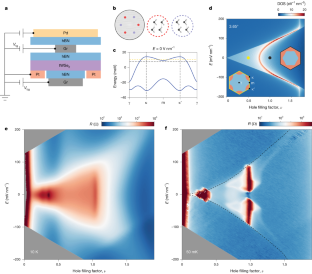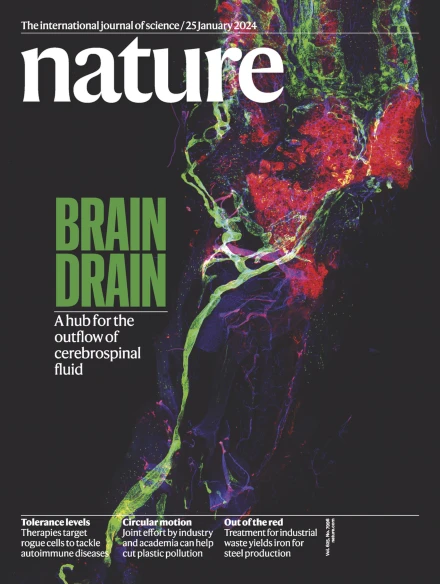Superconductivity in twisted bilayer WSe2
IF 50.5
1区 综合性期刊
Q1 MULTIDISCIPLINARY SCIENCES
引用次数: 0
Abstract
Moiré materials have enabled the realization of flat electron bands and quantum phases that are driven by the strong correlations associated with flat bands1–4. Superconductivity has been observed, but only in graphene moiré materials5–9. The absence of robust superconductivity in moiré materials beyond graphene, such as semiconductor moiré materials4, has remained a mystery and challenged our current understanding of superconductivity in flat bands. Here we report the observation of robust superconductivity in both 3.5° and 3.65° twisted bilayer tungsten diselenide (WSe2), which hosts a hexagonal moiré lattice10,11. Superconductivity emerges near half-band filling and zero external displacement fields. The optimal superconducting transition temperature is about 200 mK in both cases and constitutes about 1–2% of the effective Fermi temperature; the latter is comparable to the value in high-temperature cuprate superconductors12 and suggests strong pairing. The superconductor borders on two distinct metals below and above half-band filling; it undergoes a continuous transition to a correlated insulator by tuning the external displacement field. The observed superconductivity on the verge of Coulomb-induced charge localization suggests roots in strong electron correlations12,13. Robust superconductivity is observed in twisted bilayer tungsten diselenide (WSe2) on the verge of Coulomb-induced charge localization around half-band filling and zero external displacement fields.


扭曲双层 WSe2 的超导性
摩尔纹材料使平坦电子带和量子相得以实现,这些电子带和量子相由与平坦电子带相关的强相关性驱动1,2,3,4。目前已经观测到超导现象,但仅限于石墨烯摩尔材料5,6,7,8,9。在石墨烯以外的莫尔雷材料(如半导体莫尔雷材料4)中缺乏稳健超导性一直是个谜,这也对我们目前对平带超导性的理解提出了挑战。在此,我们报告了在 3.5° 和 3.65° 扭曲双层二硒化钨(WSe2)中观察到的强大超导性,WSe2 承载着六边形摩尔晶格10,11。超导性出现在半带填充和零外部位移场附近。在这两种情况下,最佳超导转变温度约为 200 mK,约为有效费米温度的 1-2%;后者与高温铜氧化物超导体的值相当12 ,表明存在强配对。超导体在半带填充以下和半带填充以上与两种不同的金属接壤;通过调整外部位移场,超导体会持续转变为相关绝缘体。在库仑诱导的电荷局域化边缘观察到的超导现象表明,其根源在于强电子相关性12,13。
本文章由计算机程序翻译,如有差异,请以英文原文为准。
求助全文
约1分钟内获得全文
求助全文
来源期刊

Nature
综合性期刊-综合性期刊
CiteScore
90.00
自引率
1.20%
发文量
3652
审稿时长
3 months
期刊介绍:
Nature is a prestigious international journal that publishes peer-reviewed research in various scientific and technological fields. The selection of articles is based on criteria such as originality, importance, interdisciplinary relevance, timeliness, accessibility, elegance, and surprising conclusions. In addition to showcasing significant scientific advances, Nature delivers rapid, authoritative, insightful news, and interpretation of current and upcoming trends impacting science, scientists, and the broader public. The journal serves a dual purpose: firstly, to promptly share noteworthy scientific advances and foster discussions among scientists, and secondly, to ensure the swift dissemination of scientific results globally, emphasizing their significance for knowledge, culture, and daily life.
 求助内容:
求助内容: 应助结果提醒方式:
应助结果提醒方式:


